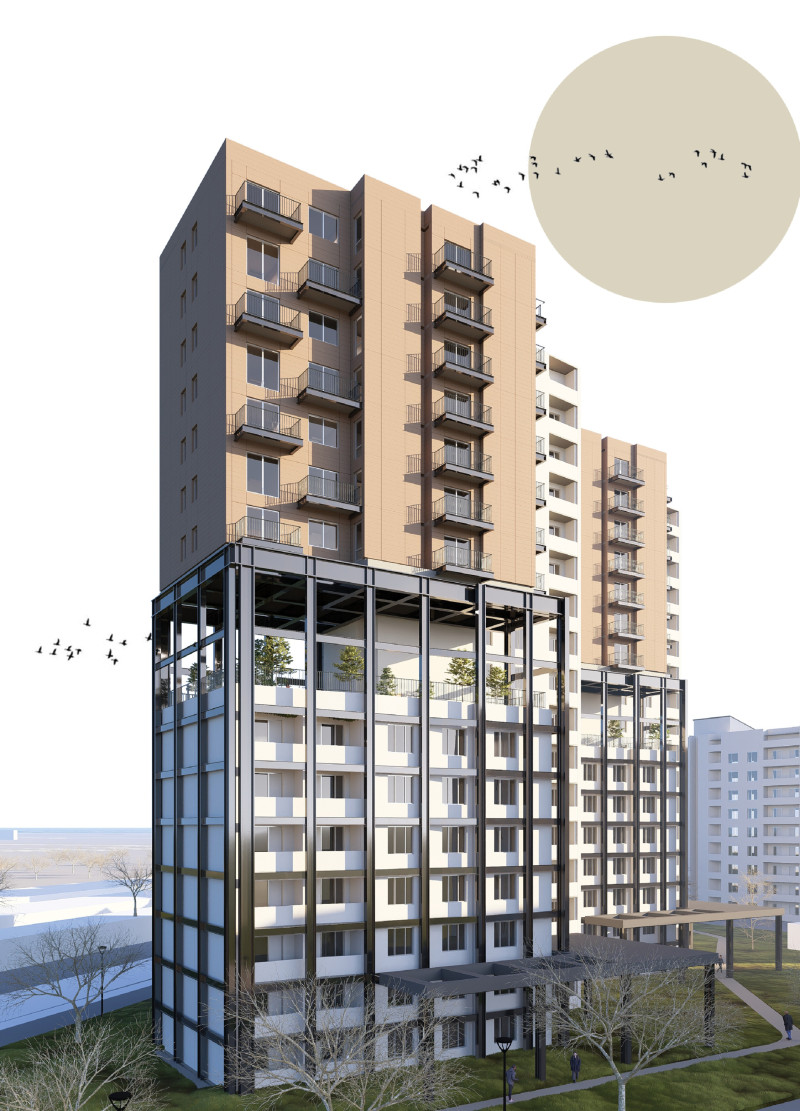5 key facts about this project
At its core, the project represents a commitment to sustainability and community engagement. It functions not only as a physical structure but as a catalyst for social interaction, designed to foster a sense of belonging among its occupants. The design cleverly accommodates various activities, promoting both individual reflection and communal gatherings, illustrating a deep understanding of the diverse ways in which people interact with space.
The architectural layout prioritizes accessibility and flow, allowing effortless movement throughout the various areas of the building. Each functional space is purposefully placed to maximize usability while ensuring that natural light permeates the interiors. This consideration for natural elements enhances the indoor environment, creating a comfortable atmosphere that aligns with the project’s overarching goal of well-being.
The facade of the building is a harmonious blend of modern materials, chosen not only for their aesthetic qualities but also for their performance characteristics. The use of large expanses of glass invites the outside in, blurring the lines between interior and exterior, while durable materials like textured concrete and responsibly sourced wood underline the project’s commitment to sustainability. The interplay of these materials creates a visually inviting yet robust exterior that is designed to withstand the test of time.
Attention to detail can be observed in the architectural features throughout the project. Elements such as strategically placed overhangs provide shade while enhancing the visual appeal, and carefully designed landscaping complements the structure, further integrating it into the site. The incorporation of green roofs and walls not only contributes to energy efficiency but also supports local biodiversity, reinforcing the building’s ecological footprint as both minimal and intentional.
Unique design approaches within the project include a focus on modular construction techniques, allowing for flexibility in use and future modifications. This adaptability speaks to the changing needs of communities, demonstrating foresight in the architectural design. Furthermore, the integration of smart building technology facilitates energy management and environmental control, showcasing a commitment to innovation without sacrificing simplicity in the user experience.
The project is a testament to thoughtful architecture, where every element serves a purpose and contributes to the narrative of the space. By addressing the environmental, social, and aesthetic dimensions of architecture, the project stands as a model for future developments. It invites observers to consider the possibilities of architectural designs that not only meet functional requirements but also enrich the lives of those who interact with them.
For those interested in delving deeper into the specifics of this architectural project, a comprehensive exploration of the architectural plans, sections, and design details is highly encouraged. This provides an opportunity to fully appreciate the nuances of the design process and the foresight involved in creating such an impactful space.


 Albert D Ybanez,
Albert D Ybanez,  Maryam Ebrahimnezhadhaghighi
Maryam Ebrahimnezhadhaghighi 























